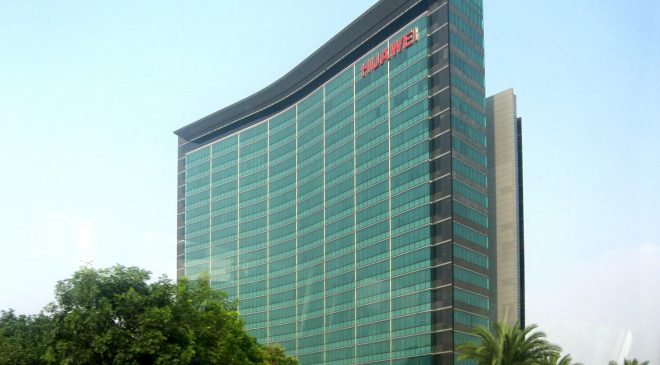
Huawei and China Mobile Guangdong keep busy with launch of enterprise private line service
China Mobile Guangdong and Huawei have worked together to launch an enterprise private line service based on next-generation optical transport network (NG OTN) technology between Guangzhou’s Dongfengzhong and Liwan districts.
The service upgrades China Mobile Guangdong’s smart private network will adapt to differentiated private line connection requirements of enterprises of all sizes. This will help accelerate the digital transformation of vertical industries, and lay a foundation for a digital economy in Guangdong Province.
New infrastructure construction represented by 5G and all-optical networks will be increasingly crucial in supporting high-quality economic development.
- In 2018, China Mobile Guangdong established an all-optical smart city group in the Greater Bay Area (covering Guangdong, Hong Kong, and Macao) and built an all-optical network in the region around Guangdong’s major cities — Guangzhou, Shenzhen, Dongguan, and Foshan.
- In 2019, China Mobile Guangdong built a smart private network covering the entire province, enhancing capabilities of virtual channel grooming based on the Greater Bay Area’s all optical network and providing premium private line services for industries such as finance and healthcare as well as government.
To further utilise the potential of the new all-optical infrastructure network, China Mobile Guangdong will continue promote application of smart private networks in additional industries and enterprises, supporting the rapid development of Guangdong’s digital economy, throughout 2020.
China Mobile Guangdong and Huawei’s joint innovation in NG OTN technology defines a smaller-granularity and more flexible optical network that supports an expanded number of service connections, higher resource utilisation, and lower transmission latency, further enhancing the capability of smart private networks.
The integrated all-optical network is compatible with multiple technologies such as SDH, OTN, and NG OTN, supports flexible access of enterprise customers anywhere in the province, and ensures fast service provisioning within days.
This announcement comes off the back of the Bureau of Industry and Security (BIS) announcing plans to protect US national security by restricting Huawei’s ability to use US technology and software to design and manufacture its semiconductors abroad.
According to the US Department of Commerce’s statement to the press, this will cut off Huawei’s efforts to undermine U.S. export controls.
“BIS is amending its longstanding foreign-produced direct product rule and the Entity List to narrowly and strategically target Huawei’s acquisition of semiconductors that are the direct product of certain U.S. software and technology,” stated the Department.
Secretary of Commerce Wilbur Ross said BIS added Huawei Technologies and 114 of its overseas-related affiliates to the Entity List, companies wishing to export US items were required to obtain a license.
Ross states Huawei has continued to use US software and technology to design semiconductors, “undermining the national security and foreign policy purposes of the Entity List by commissioning their production in overseas foundries using US equipment”.
“Despite the Entity List actions the Department took last year, Huawei and its foreign affiliates have stepped-up efforts to undermine these national security-based restrictions through an indigenisation effort. However, that effort is still dependent on U.S. technologies,” he said.
“This is not how a responsible global corporate citizen behaves. We must amend our rules exploited by Huawei and HiSilicon and prevent US technologies from enabling malign activities contrary to US national security and foreign policy interests.”
This targeted rule change will make the following foreign-produced items subject to the Export Administration Regulations (EAR):
- Items, such as semiconductor designs, when produced by Huawei and its affiliates on the Entity List (e.g., HiSilicon), that are the direct product of certain U.S. Commerce Control List (CCL) software and technology; and
- Items, such as chipsets, when produced from the design specifications of Huawei or an affiliate on the Entity List (e.g., HiSilicon), that are the direct product of certain CCL semiconductor manufacturing equipment located outside the United States. Such foreign-produced items will only require a license when there is knowledge that they are destined for reexport, export from abroad, or transfer (in-country) to Huawei or any of its affiliates on the Entity List.
“To prevent immediate adverse economic impacts on foreign foundries utilising US semiconductor manufacturing equipment that have initiated any production step for items based on Huawei design specifications as of May 15 2020, such foreign-produced items are not subject to these new licensing requirements so long as they are reexported, exported from abroad, or transferred (in-country) by 120 days from the effective date,” stated the Commerce Department.
Tags: 5GChina Mobile GuangdongHuaweiUS Department of CommerceWilbur Ross




